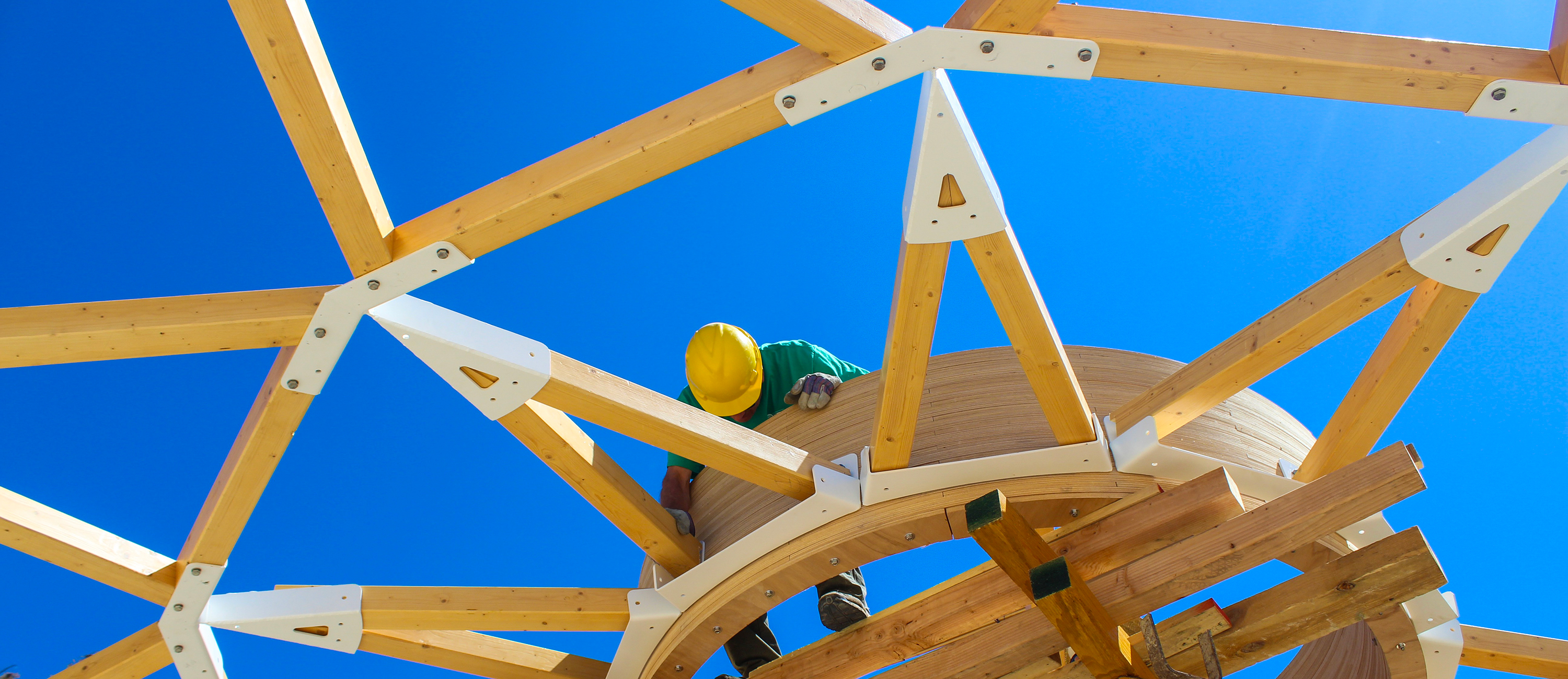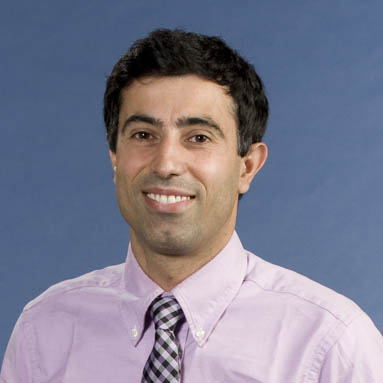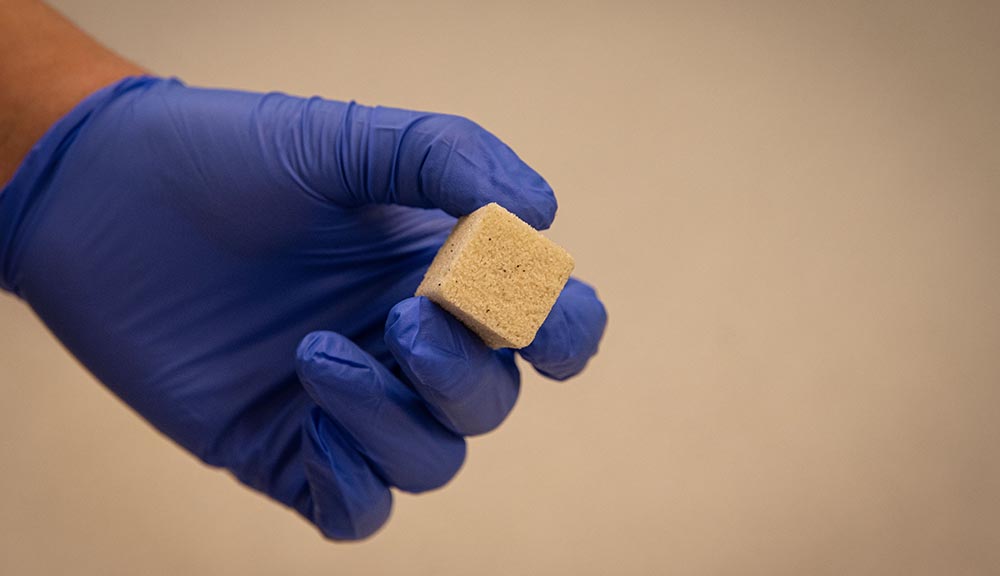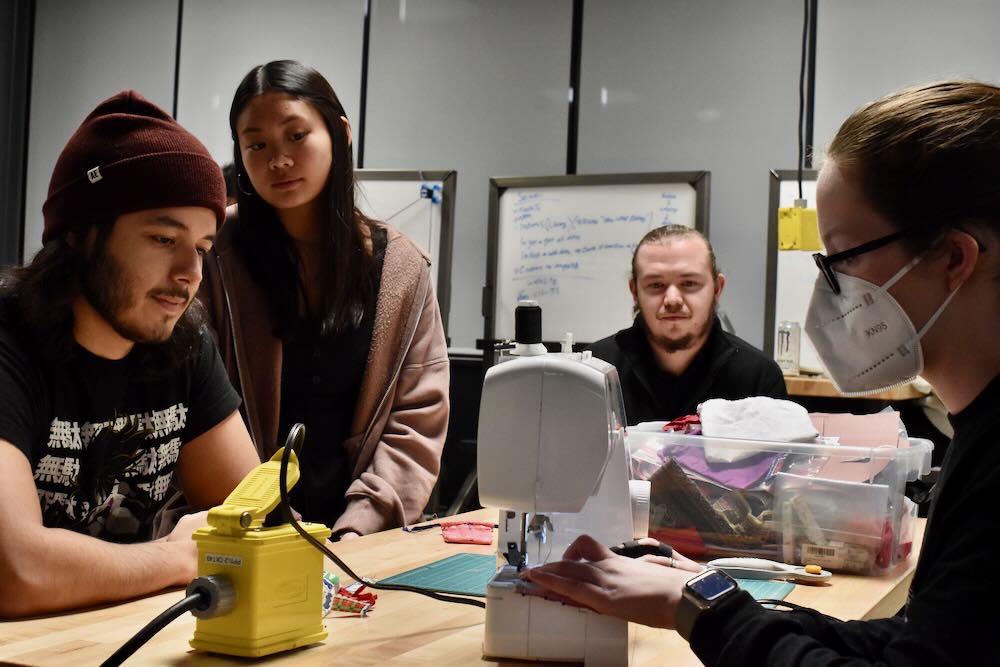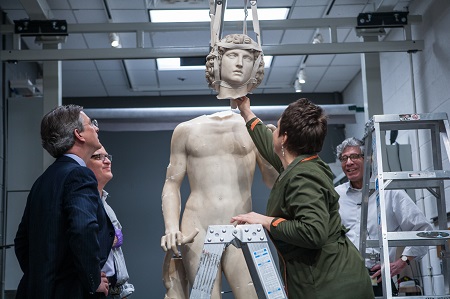
Caption
It seemed a catastrophe. A classic, priceless piece of art and history nearly demolished.
A little after closing time on a Sunday in October 2002, a plywood pedestal supporting a life-size Renaissance-era marble statue of Adam collapsed, toppling the sculpture by Tullio Lombardo. It shattered into hundreds of fragments, an essential 500-year-old crime scene scattering the floor of New York’s Metropolitan Museum of Art.
But hope, patience and meticulous contemplation eventually prevailed.
Dozens of experts from a variety of disciplines came together to accomplish the painstaking, 12-year-long task of literally piecing the artwork back together.
Among them was WPI civil engineering graduate student Jessica Rosewitz, under the tutelage of her thesis advisor, assistant professor Nima Rahbar.
“The great part of engineering,” Rosewitz says, “is the combination of mechanics of materials and design theory, and the ability to adapt these sciences to any situation.”
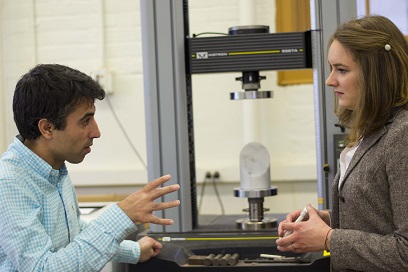
The work done by Professor Nima Rahbar and graduate student
Jessica Rosewitz helped conservators understand what materials
to use when pinning pieces of stone back together.
In her case, that meant performing what’s known as finite element analysis. The computational method simulated physical load tests (that is, applying pressure, observing, and measuring response) on 8-inch-tall, 6-inch-diameter marble cores. The cores had been cut at 45-degree angles, drilled and then pinned back together, with a half-dozen different pinning materials assessed.
The simulations used the same dimensions as physical tests, whose results were used to validate Rosewitz’s results.
But beyond matching simulations to physical tests, she explained, the goal was to gain a deeper understanding of failure mechanisms inherent in using a pin to secure two halves of stone together, and to answer the question of whether different pins would cause damage to marble when placed under pressure.
Ultimately, researchers came to the conclusion that fiberglass pins caused the least damage; in the end they were used in both of the statue’s ankles and its left knee, according to materials from the Met, whose conservators documented the entire process.
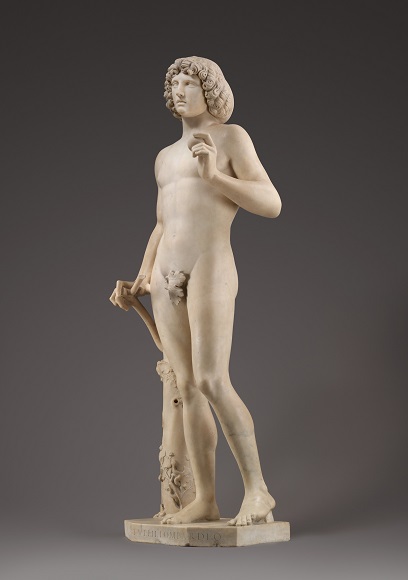
Tullio Lombardo (1455-1532) marble sculpture
of Adam 1490-95, at the Metropolitan Museum
of Art. Photo: The Metropolitan Museum of Art,
Photograph Studio/Joseph Coscia, Jr.
As Rosewitz notes, using engineering helped develop a deeper understanding of this particular project’s failure mechanisms. That is, “internal densification damage by compression and splitting by tension in the marble around the pin hole,” she explains, “and that a weaker pin such as fiberglass is a better choice than the traditional steel pin.”
The statue depicts “the first man,” as described in the Bible, naked but for a fig leaf, left arm holding aloft an apple, right arm subtly rested on a tree trunk. It was crafted by Lombardo for the tomb of Andrea Vendramin, who served as doge, or chief magistrate, of Venice in the 1470s.
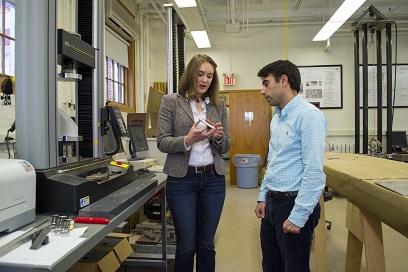
Jessica Rosewitz and Professor Nima Rahbar in a lab at WPI.
In its unfortunate collapse, it split into 28 larger fragments and hundreds of smaller bits and shards; according to the Met, those were plotted on a grid and photographed, then the statue was reconstructed from the bottom up using 3-D imaging, pins, and specially designed, reversible adhesives. Once assembled, it was cleared of built-up dirt and cosmetically fixed, then returned to public view on Nov. 11.
“It was impressive to say the least,” Rosewitz says of the rehabilitated sculpture, which she viewed in person along with Rahbar in December. During that trip, she also presented her preliminary results to lead members of the restoration team, who, she says, were pleased with her work.
She began working on the project in the summer of 2014, following her first semester back to school after seven years working in consultant bridge design. She is basing her master of science thesis on the project.
In addition to learning that simulations are highly dependent on many variables, Rosewitz says that she also recognized there’s a strong need for more engineers in historic preservation.
“The conservators have taught me that it is worth asking the question ‘What was the artist’s intent?’ she says. “In their case it was used to decide whether to restore the statue or leave it broken. I believe this question can be applied to an engineering situation, and especially can assist architects and engineers to work better together.”
